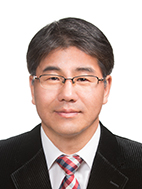Invited Speaker

Prof. Sewoong Chung
Department of Environmental Engineering, Chungbuk National University, South KoreaSpeech Title: Estimating Greenhouse Gas Emissions of Stratified Dam Reservoirs in Temperate Moist Climate Regions
Abstract: Reservoirs control the carbon cycle of terrestrial systems and are considered as important sources of greenhouse gases (GHGs), such as CO2, CH4, and N2O, into the atmosphere. However, studies on estimating carbon emissions of dam reservoirs located in temperate wet regions are very scarce. This study aimed to estimate the GHGs emissions and footprints of stratified reservoirs in South Korea. The GHGs footprint evaluates the change in net carbon emissions considering the watershed environment before and after the dam reservoir. The G-res Tool developed by UNESCO/IHA was used to estimates CO2 and CH4 emissions by considering various pathways of emissions and to characterize changes in GHG fluxes over 100 years based on the expected lifetime of dams. As a result, it was found that most large-scale multi-purpose dam reservoirs with low power intensity (hydroelectric power generation capacity per unit area of the reservoir, W/m2) are the source of GHG emissions to the atmosphere, but the emission intensity (GHG output per unit power, gCO2-eq/kW) was significantly lower than that of fossil fuels. As the dam reservoir carbon footprint evaluation is essential for the Clean Development Mechanism evaluation of hydroelectric power generation, continuous research is needed in the future. In particular, in order to reduce the uncertainty of the current estimate, experimental studies that can reflect changes in the characteristics of GHGs emissions by space and time is needed.
